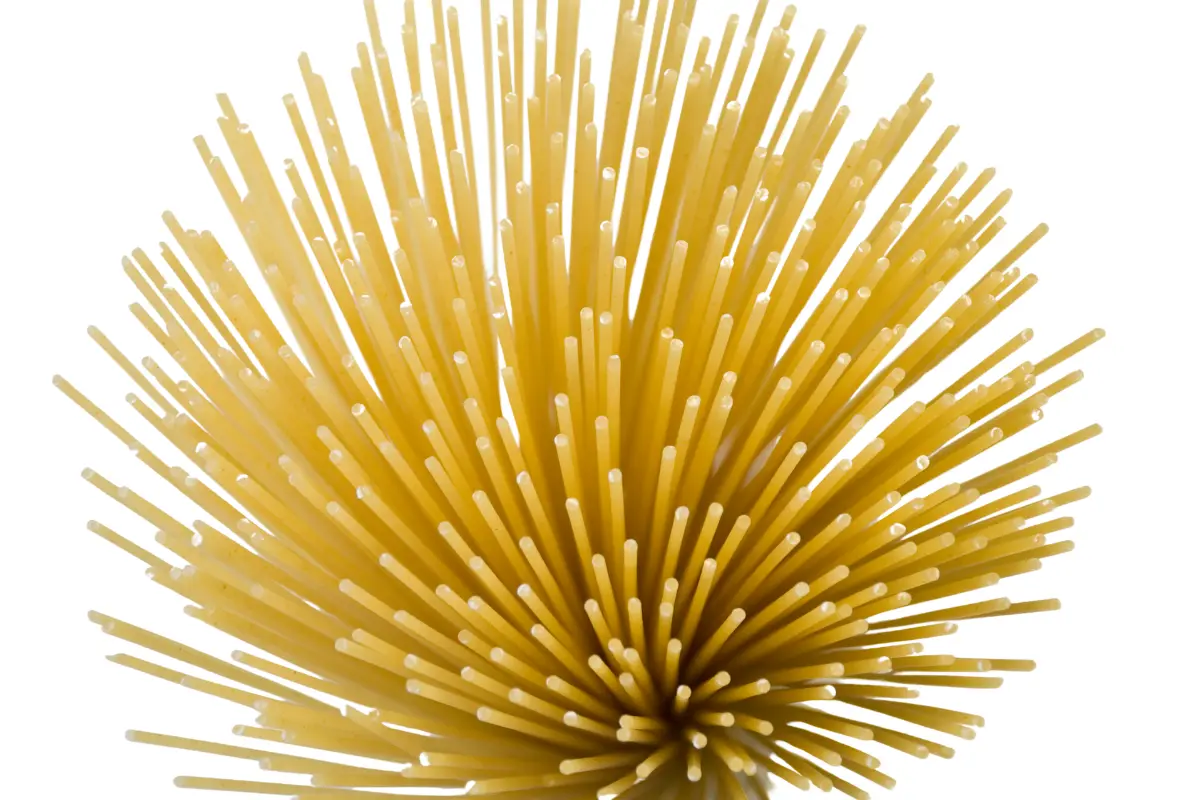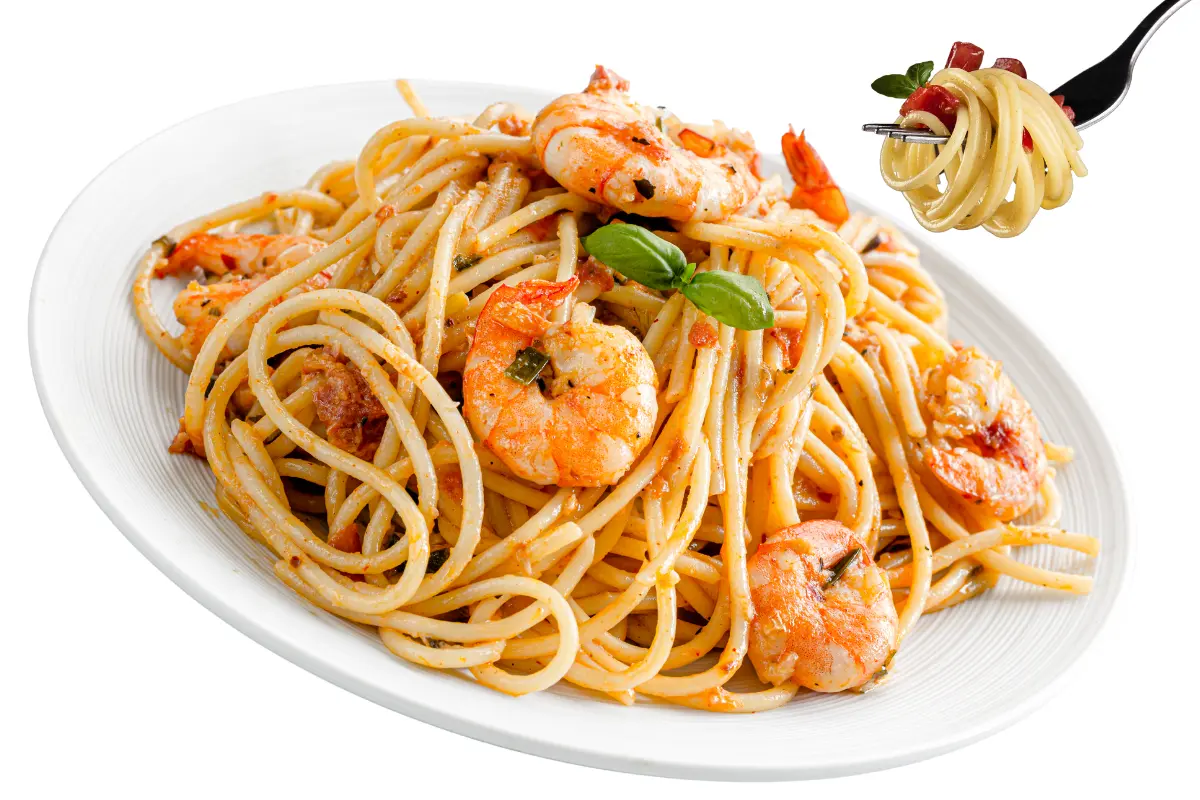Introduction to Spaghetti
a staple of Italian cuisine has woven its way into the hearts of food enthusiasts worldwide. This long, thin pasta, made from durum wheat semolina, is not just a dish but a canvas for culinary creativity. From the bustling streets of Naples to the cozy kitchens of home cooks, spaghetti serves as a versatile base for a myriad of sauces and ingredients, each version telling its own unique story.
Overview of Spaghetti Varieties
The world of spaghetti is as diverse as it is delicious. Beyond the classic spaghetti al pomodoro (spaghetti with tomato sauce), there’s a whole spectrum of variations to explore. Spaghetti aglio e olio (garlic and oil), spaghetti carbonara (with eggs, cheese, pancetta, and pepper), and spaghetti alla puttanesca (with tomatoes, olives, capers, and anchovies) are just a few examples of how a simple strand of pasta can be transformed into an unforgettable meal.
As we embark on this culinary journey, we’ll delve into the origins of spaghetti, discover the secrets to cooking it to perfection, and explore the endless possibilities it offers to those willing to experiment with flavors and textures. So, grab your fork and let’s twirl our way through the wonderful world of spaghetti.
The Art of Cooking Spaghetti
Mastering the Perfect Al Dente Texture
Cooking spaghetti to that perfect al dente texture, where it’s tender yet firm to the bite, is an art form in itself. The key lies in boiling the pasta in a large pot of salted water, giving the strands ample space to move around. Timing is crucial; too little and it’s crunchy, too much and it turns mushy. A good rule of thumb is to start tasting a couple of minutes before the package’s recommended cooking time. Remember, it’ll continue to cook a bit even after you’ve drained it, especially if you’re tossing it with a hot sauce.
Choosing the Right Sauce
The beauty of spaghetti lies in its versatility, serving as the perfect partner to a wide array of sauces. The trick is to match the sauce’s consistency with the pasta’s texture. Light olive oil-based sauces, like aglio e olio, cling beautifully to the slippery strands, while richer, meatier sauces, such as Bolognese, require the pasta to be hearty enough to carry the weight. The harmony between pasta and sauce is what transforms a simple dish into a symphony of flavors.
The Finishing Touches
The final flourish of any spaghetti dish is often what elevates it from good to sublime. A sprinkle of freshly grated Parmesan or Pecorino cheese, a drizzle of high-quality extra virgin olive oil, or a handful of fresh herbs can add layers of flavor and texture. And let’s not forget the power of seasoning – a pinch of salt or a crack of black pepper can make all the difference, awakening the dish’s full potential.
As we wrap up this section, it’s clear that cooking spaghetti is much more than just boiling pasta. It’s about understanding the interplay between texture and flavor, the balance of ingredients, and the joy of creating a dish that’s both comforting and exciting. Whether you’re a seasoned chef or a kitchen novice, the world of spaghetti offers endless opportunities to explore, experiment, and indulge.
Spaghetti Around the World
Global Variations of Spaghetti
Spaghetti may have its roots deeply embedded in Italian soil, but its influence stretches across continents, embraced and adapted by cultures around the globe. In the United States, spaghetti and meatballs have become an iconic dish, despite its divergence from traditional Italian cuisine. Meanwhile, in parts of Asia, spaghetti is ingeniously incorporated into local dishes, seasoned with soy sauce, spices, and local ingredients to create fusion meals that tantalize the taste buds.
Vegetarian and Vegan Spaghetti Dishes
The versatility of spaghetti extends into the realms of vegetarian and vegan diets, proving that you don’t need meat to make a spaghetti dish shine. From the simplicity of spaghetti al pomodoro, with its rich tomato sauce and basil, to the creativity of avocado or walnut-based pesto sauces, there’s no shortage of plant-based options that pack a flavorful punch.
Healthier Spaghetti Alternatives
For those mindful of their dietary choices, spaghetti offers a canvas for healthier alternatives without compromising on taste. Whole wheat spaghetti provides a higher fiber option, while spaghetti made from legumes like chickpeas or lentils offers a gluten-free solution packed with protein. Even spiralized vegetables, like zucchini or squash, can stand in for traditional pasta, offering a low-carb, nutrient-rich base for your favorite sauces.
As we explore the global impact of spaghetti, it’s evident that this humble pasta has transcended its Italian origins to become a global staple. Each variation, from the heartiest meat sauce to the lightest vegan pesto, tells a story of cultural exchange and culinary innovation. Spaghetti, in its many forms, continues to bring people together, inviting them to the table for a shared experience that goes beyond mere sustenance to become a celebration of global flavors and traditions.
The Cultural Significance of Spaghetti
Spaghetti in Italian Tradition
In Italy, spaghetti is not just food; it’s a symbol of tradition, family, and the Italian way of life. Meals are considered a time to gather, connect, and enjoy the company of loved ones, with spaghetti often at the center of the table. The dish embodies the simplicity and quality of Italian cuisine, where a few high-quality ingredients come together to create something truly special. Regional variations of spaghetti dishes reflect the diversity of Italy’s culinary landscape, from the seafood-infused spaghetti alle vongole of the coast to the hearty, meaty ragùs of the inland regions.
Spaghetti as a Global Comfort Food
Beyond Italy, spaghetti has become a comfort food staple around the world, cherished for its versatility and ease of preparation. It’s a dish that can evoke nostalgia, bringing back memories of family dinners, special occasions, or that favorite restaurant dish. Spaghetti’s ability to adapt to different tastes and dietary needs has cemented its place in the hearts of many, transcending cultural and geographical boundaries.
Spaghetti in Popular Culture
Spaghetti has also made its mark in popular culture, from the iconic spaghetti scene in Disney’s Lady and the Tramp to its frequent appearances in films, books, and art as a symbol of love, comfort, and sometimes, humor. The dish’s ubiquity and recognizability have made it a cultural icon, representing more than just a meal but a shared human experience.
As we conclude our exploration of spaghetti, it’s clear that this simple dish of pasta and sauce is much more than the sum of its parts. Spaghetti carries with it centuries of tradition, endless possibilities for innovation, and a universal appeal that has made it a beloved dish across the globe. Whether dressed in a simple tomato sauce or a complex, savory ragù, spaghetti continues to be a canvas for culinary expression, a source of comfort, and a reason to gather around the table.

Crafting the Ultimate Spaghetti Dish at Home
Selecting Quality Ingredients
The secret to a memorable spaghetti dish lies in the quality of its ingredients. Opting for high-quality pasta, whether dried or fresh, can make a world of difference in texture and flavor. When it comes to sauces, fresh, ripe tomatoes, aromatic herbs, and premium olive oil elevate a simple sauce into something extraordinary. For meat-based sauces, choosing high-quality cuts and considering their source can enhance both the taste and the nutritional value of the dish.
The Art of Sauce Pairing
Pairing the right sauce with spaghetti is akin to finding the perfect match in a dance. The pasta’s texture and shape should harmonize with the sauce’s consistency and ingredients. Light, olive oil-based sauces complement the delicate nature of spaghetti, while richer, chunkier sauces cling to the strands, ensuring each bite is full of flavor. Experimenting with different pairings can lead to delightful discoveries and new favorites.
Personalizing Your Spaghetti Dish
The beauty of cooking spaghetti at home is the freedom to personalize your dish. Whether it’s adding a secret ingredient to your sauce, experimenting with different herbs and spices, or incorporating seasonal vegetables, there’s always room for creativity. Personal touches not only make the dish unique but also reflect the cook’s personality and culinary influences.
Presentation and Serving
The final touch to any spaghetti dish is its presentation. Plating your spaghetti with care, and garnishing with a sprinkle of freshly grated cheese, a few basil leaves, or a drizzle of quality olive oil can transform the dining experience. Serving spaghetti not only satisfies the palate but also the eyes, making the meal truly special.
In wrapping up our journey through the world of spaghetti, it’s evident that this beloved dish is more than just pasta and sauce. It’s a canvas for culinary creativity, a symbol of cultural heritage, and a testament to the simple pleasures of dining. Whether you’re enjoying a classic spaghetti al pomodoro or venturing into more innovative territory, the key lies in the passion for good food and the joy of sharing it with others. So, gather your ingredients, put on your apron, and let the magic of spaghetti bring warmth and flavor to your table.
FAQs About Cooking Spaghetti
How Do I Prevent Spaghetti from Sticking Together?
One of the most common questions when it comes to cooking spaghetti is how to keep those strands from turning into a clumpy mess. The solution is simple: ensure your cooking water is at a rolling boil before adding the pasta, use plenty of water to give the strands room to move, and stir occasionally during the cooking process. A dash of olive oil in the water can also help, but the key is in the stirring.
Can I Reheat Leftover Spaghetti?
Absolutely! Spaghetti can be reheated and enjoyed again, though the method can affect the texture. For best results, sprinkle a bit of water over the spaghetti before gently reheating it in a microwave, covered. This helps to steam the pasta, preventing it from drying out. Alternatively, reheating it in a pan over low heat with a bit of sauce can revive its flavors and moisture.
Is Spaghetti Healthy?
Spaghetti, like any food, can be part of a healthy diet when consumed in moderation and balanced with vegetables, lean proteins, and healthy fats. Opting for whole wheat spaghetti can increase fiber intake, while vegetable-based sauces can boost your meal’s vitamin and mineral content. As with all foods, the key is balance and variety.
How Can I Make Gluten-Free Spaghetti?
For those avoiding gluten, there are numerous gluten-free spaghetti options available, made from corn, rice, quinoa, or legume flours. These alternatives offer a similar texture and taste to traditional wheat pasta and can be used in any spaghetti dish. Cooking times may vary, so it’s important to follow the package instructions for the best results.
As we conclude our comprehensive exploration of spaghetti, from its rich history and global variations to the art of cooking and personalizing your dish, it’s clear that spaghetti is more than just a staple of Italian cuisine. It’s a global phenomenon that has captured the hearts and palates of people around the world. Whether you’re a seasoned chef or a home cook, the world of spaghetti offers endless possibilities for creativity, exploration, and, most importantly, delicious meals shared with loved ones. So, why not boil a pot of water, grab your favorite sauce, and celebrate the simple joy of cooking spaghetti tonight?
Classic Spaghetti with Meat Sauce Recipe: A Timeless Favorite
Introduction to the Recipe
Dive into the comforting embrace of classic spaghetti with meat sauce, a dish that brings the rich flavors of Italian cuisine right to your dinner table. This timeless recipe combines tender spaghetti noodles with a hearty, savory meat sauce, topped off with a sprinkle of grated Parmesan cheese for an added touch of indulgence. Whether you’re gathering around the table with family or enjoying a cozy meal solo, this spaghetti recipe promises to satisfy your cravings and warm your soul.
Ingredients You’ll Need
- 1 lb spaghetti
- 2 tbsp olive oil
- 1 onion, chopped
- 2 cloves garlic, minced
- 1 lb ground beef
- 1 can (28 oz) crushed tomatoes
- 2 tsp dried basil
- 1 tsp dried oregano
- Salt and pepper, to taste
- Grated Parmesan cheese, for serving
Step-by-Step Cooking Instructions
- Preparing the Spaghetti: Start by cooking 1 lb of spaghetti according to the package instructions until it reaches that perfect al dente texture. Once cooked, drain the spaghetti and set it aside, keeping it warm.
- Creating the Flavor Base: In a large skillet, warm 2 tbsp of olive oil over medium heat. Add the chopped onion and minced garlic to the skillet, sautéing them until they’re soft and fragrant, laying the foundation for a sauce full of depth and flavor.
- Browning the Meat: To the skillet, add 1 lb of ground beef, cooking it until it’s thoroughly browned and no longer pink. Breaking the meat up with a spoon as it cooks ensures an even texture throughout the sauce.
- Simmering the Sauce: Stir in the crushed tomatoes, along with 2 tsp of dried basil and 1 tsp of dried oregano, infusing the sauce with classic Italian herbs. Season with salt and pepper to taste, then let the sauce simmer for 10-15 minutes, allowing the flavors to meld beautifully.
- Bringing It All Together: Serve the cooked spaghetti topped with a generous helping of the meat sauce. Finish each plate with a sprinkle of grated Parmesan cheese, adding a layer of savory richness to the dish.
Notes and Customization Tips
- Herb Variations: Feel free to experiment with your favorite herbs and spices to tailor the sauce to your taste preferences. Fresh basil or parsley can add a vibrant, fresh touch to the dish.
- Storing Leftovers: Any leftover sauce can be stored in the refrigerator for up to 3 days or frozen for future use, making this dish not only delicious but convenient for busy weeknights.
Conclusion
This classic spaghetti with meat sauce recipe is more than just a meal; it’s a celebration of simple ingredients coming together to create something truly special. Whether it’s a weeknight dinner or a special occasion, this dish is sure to bring smiles and satisfaction to all who gather around your table. So why wait? Unleash your inner chef, and let the comforting aromas of this classic spaghetti fill your kitchen tonight.


2 thoughts on “Best Homemade Spaghetti Meat Sauce: Quick Dinner Recipe”